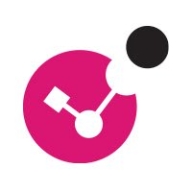

Recorded Future and Check Point Security Management compete in the threat intelligence and security management category. Recorded Future has a slight edge with its real-time alerts and dark web monitoring, while Check Point excels in centralized security management and integration capabilities.
Features: Recorded Future offers comprehensive threat intelligence with real-time alerts, anonymous internet searches, and dark web monitoring. Its integration with security stacks and customized dashboards further enhance its value. Check Point Security Management shines with its centralized management of security policies, firewall rules, and integration with SmartConsole, simplifying configuration and management.
Room for Improvement: Recorded Future is noted for high pricing, complexity, and a restrictive data export process. Users desire improved automation and accuracy to minimize false positives. Check Point could benefit from enhancing its user interface and performance, particularly in SmartConsole, and improved third-party integrations alongside additional automation features.
Ease of Deployment and Customer Service: Recorded Future is primarily cloud-based, offering flexibility and scalability but faces challenges with technical support efficiency. Check Point, mainly deployed on-premises, is commended for responsive support but can be complex to set up and demanding on resources.
Pricing and ROI: Recorded Future is expensive and best suited for larger enterprises, with ROI dependent on user skill and system utilization. Check Point's pricing is comprehensive but may incur unexpected costs due to its license model. Both demand careful budgeting and consideration to optimize investment returns.
I have seen a strong ROI from using Check Point Security Management through unified policy management, reduced misconfigurations, and faster incident response.
The time to resolve issues is very much better now with Check Point Security Management.
I have seen a hundred percent return on investment with Check Point Security Management.
When we face technical issues, they are ready to help us.
We have partner support that helps us mitigate vulnerabilities reported by our infrastructure team.
The challenge was with drivers due to the size, and we had not provisioned the partition to the right size.
The customer support is frustrating and not efficient.
It can be a multi-domain Security Management server and can manage large or segmented environments with multiple domains or customers.
When you upgrade multiple times, you leave many files that are useless. They are dated, so it's always better to create a new machine every few versions, for example, three or four major versions.
The scalability of Check Point Security Management is excellent.
Being a SaaS, Recorded Future generally does a good job in terms of scalability.
Check Point Security Management is really stable, and I have not experienced any downtime or issues with reliability except for when we do upgrades.
The SmartConsole used to administrate the security management is somewhat unstable.
Check Point Security Management is stable and I have not experienced any downtime or reliability issues.
Recorded Future is very stable, with a rating of nine.
When the logs are too heavy for the security management server, the CPU spike will be high, causing our management day-to-day activity to lag or become difficult.
I believe they can improve the management by allowing better API functionality because the API now is a little complicated, making it difficult to do automation.
Additionally, it crashes pretty regularly, so they could resolve the stability issues as well.
The Insikt Group covers a narrow range of areas, which doesn't reflect my needs.
Since we are using it extensively, we get significant discounts during procurement.
Licensing is quite expensive.
We pay on a three-year base.
Recorded Future is expensive, with a personal rating of eight for cost.
Check Point Security Management has positively impacted my organization by providing centralized control, allowing us to manage all security policies and gateways from a single console, reducing complexity and saving time.
After deploying Check Point Security Management, we improved our productivity by integrating all devices into a single console instead of managing separate log-ins for each branch's gateways, making our admin team's tasks easier.
The monitoring is exceptional as it provides consolidated logs, signals, and any alerts that come from the security gateway in real time.
Having a layer of intelligence within my SIEM that reflects in Recorded Future, and being able to enrich the data at my SIEM, offers various angles that I wouldn't be able to see without it.
| Product | Market Share (%) |
|---|---|
| Recorded Future | 14.6% |
| Check Point Security Management | 0.6% |
| Other | 84.8% |


| Company Size | Count |
|---|---|
| Small Business | 44 |
| Midsize Enterprise | 30 |
| Large Enterprise | 41 |
| Company Size | Count |
|---|---|
| Small Business | 2 |
| Midsize Enterprise | 3 |
| Large Enterprise | 9 |
Check Point Security Management is an advanced security management platform for enterprises. The platform integrates all aspects of security. A single platform manages the entire infrastructure, from data centers to private/public cloud deployments.
Check Point Security Management is a reliable and easy-to-use security platform. It integrates all aspects of your security environment to strengthen the security posture without impairing productivity. The system has a layered policy model. This means the security policy can be separated into layers for network segmentation. Different administrators can manage different policies. The policy layer automates the tasks.
The platform is extensible, scalable, and integrates easily with orchestration systems and change management.
Basic Components of the Infrastructure
The smart console offers several advantages. Changes in security policies and logs can be done with a click. You can navigate from an item within a log to the policy. There are also built-in multi-language support and accessibility features.
1. Security Management Server: The server manages security gateways with set security policies and monitors security events on the network.
The automation server is an integrated part of the management server. The API server is active by default on servers with 4 GB of RAM or more and on standalone servers with 8 or more GB of RAM.
The automation server communicates with the management server the same way as the Smart Console. This architecture allows the same validation errors and warnings to be presented when using an automation session.
The same audit logs generated using the Smart Console are also generated using an automation session. If you have a multi-domain environment, there is only one automation server that monitors all the IP addresses of the multi-domain management server.
2. Security Gateway is placed at the edge of the network. It monitors and filters traffic and enforces security policies.
Logging, Event management, and Monitoring
With Check Point Security Management, logging, reporting, event management, and monitoring are integrated. The platform features widgets and chart templates that optimize visibility. One of the best features is the one-click exploration. This simplifies going from a general overview to specific event details.
Benefits of Check Point Security Management
The unified console also means a single policy for users, data, applications, and networks. The granularity control helps accelerate administration processes. This feature, together with automation, is key to achieving reduced operational overhead. Security teams can automate tasks and even create self-service security web portals with the Check Point Security Management platform.
Threat management is fully integrated, with reporting, logging, and monitoring all in one dashboard. This provides full visibility into the security of the network.
Security Management Suite
The Security Management Suite consists of the following modules:
Reviews from Real Users
A Network Security Engineer/Architect at a tech services company says, "The features we like and find the most valuable are the ways we can manage the policy, create objects, and drag and drop objects in our daily operation. It makes our daily operation on the firewall management much easier than going, for example, to one firewall, then going to the other."
"The management API is the best new feature for me. It allows us to further automate our customers' automated server ordering," says a System Engineer Network & Security at OTTO GmbH & Co KG.
A Senior Infrastructure Services Specialist at St.George Bank Limited adds that "The solution is ideal for use and deployment in a large infrastructure environment."
Recorded Future is a powerful and effective cyber threat intelligence (CTI) platform that aims to empower administrators to protect their organizations from threats, both known and unknown. The machine learning engine that Recorded Future utilizes can process the same amount of data that 9,000 analysts working five days a week, eight hours a day for an entire year can process. It simplifies threat detection and remediation so that organizations can focus on other tasks.
Recorded Future Benefits
Some of the ways that organizations can benefit by choosing to deploy Recorded Future include:
Recorded Future Features
Some of the many features Recorded Future offers include:
Reviews from Real Users
Recorded future is a solution that stands out when compared to its top competitors. Two major advantages it offers are the threat research tools that it provides and the threat monitoring capabilities that it enables users to leverage.
A security operations lead at a comms service provider writes, “Recorded Future covers a lot of different use cases. For example, we are using it for threat intelligence research. We do use the tool to make active research on what is found around the threat. We look at patterns, for example, and see what can be elaborated on from that.”
They also write, “We can also use it for active monitoring in the customer interface. We can monitor the business side of a campaign. We can monitor for specific threats or market activity on the dashboard. We can develop queries to run in a continuous mode in order to get the best reviews.”
We monitor all Threat Intelligence Platforms (TIP) reviews to prevent fraudulent reviews and keep review quality high. We do not post reviews by company employees or direct competitors. We validate each review for authenticity via cross-reference with LinkedIn, and personal follow-up with the reviewer when necessary.